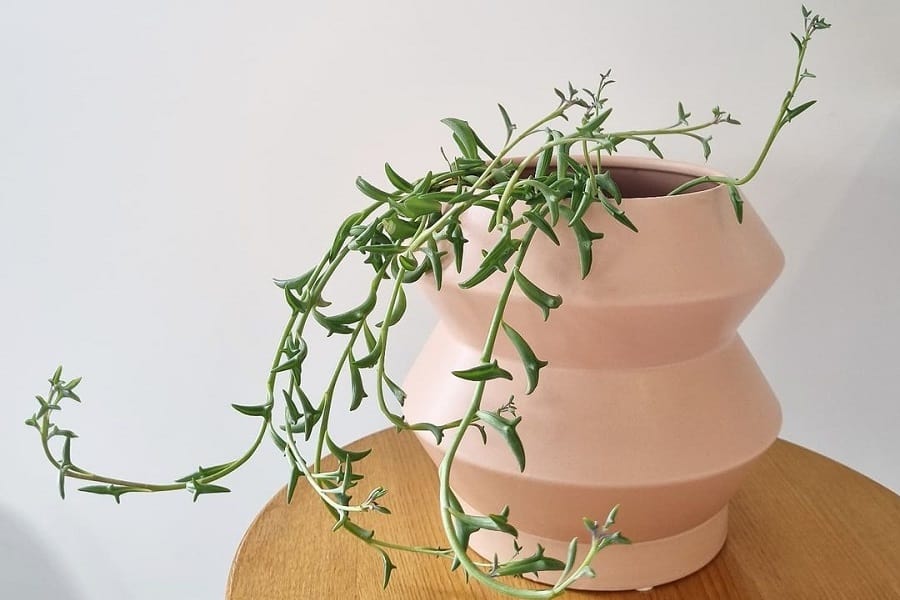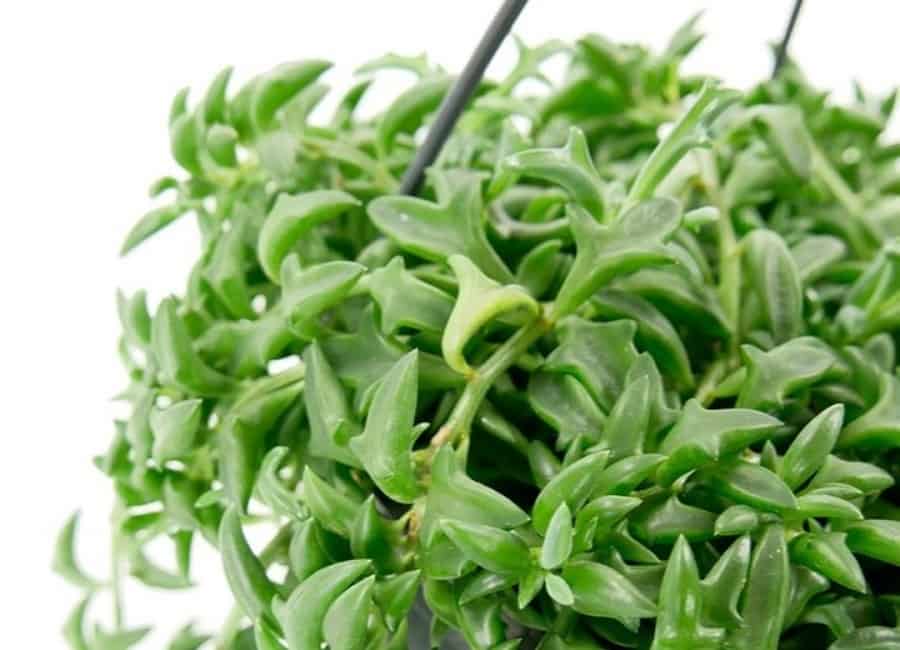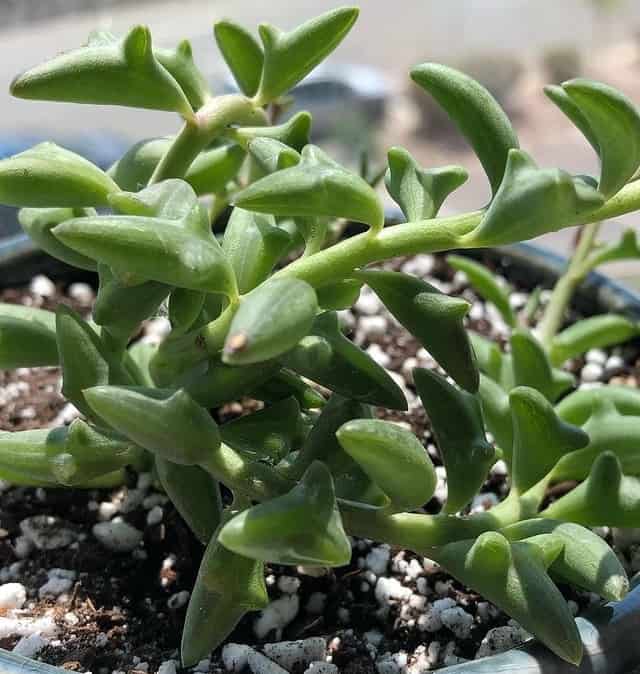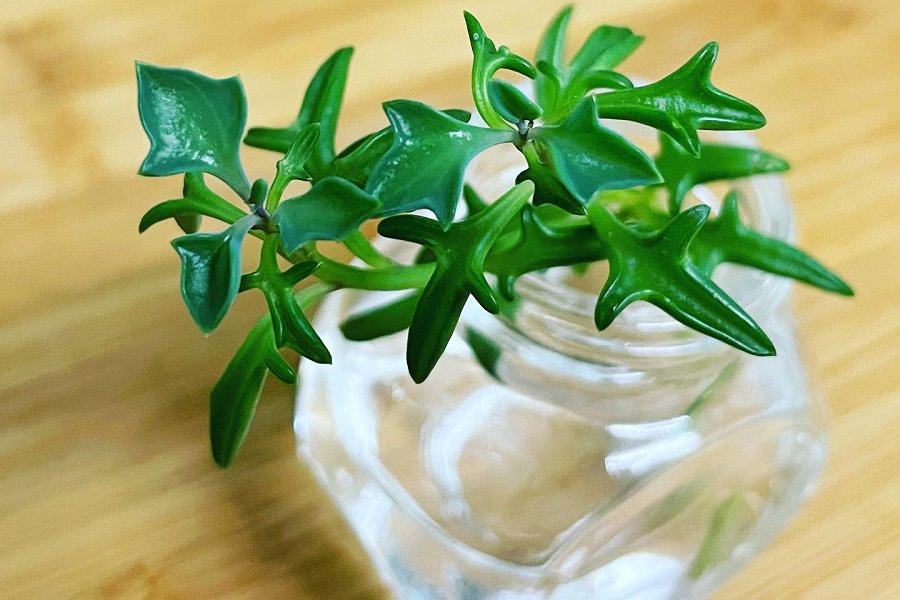Step-by-Step: Propagating String of Dolphins
Have you ever seen those cool indoor plants that look like a bunch of dolphins made out of wire? Well, those are called string of dolphins, or Senecio peregrinus if you want to get fancy. These plants are part of the Asteraceae family and they have these long, wavy tendrils that make them super unique. Oh, and let’s not forget about their delicate little flowers! If you’re curious about how to make more of these quirky plants either in soil or water, you’re in luck! We’ve got all the tips and tricks for you right here. So, let’s jump right in and get our dolphin propagation party started!

Contents
When to Propagate String of Dolphins
Alright, let’s talk about when you should jump into the exciting world of propagating string of dolphins. It really depends on what situation you find yourself in.
Scenario 1: Saving a Dying Plant
If you already have a string of dolphins plant that is on the brink of giving up, it’s important to act fast. Propagate it right away! You see, you can’t propagate a plant if there are no healthy parts left. So, grab a clean knife and select a healthy strand from the plant. That’s your starting point!
Scenario 2: Wanting a Brand New Plant
Now, let’s say you’re itching to add a new indoor plant to your collection. In this case, you’ll still need to take a strand from a healthy string of dolphins plant, but timing is crucial. You want to do this right before the plant’s growing season, typically in early summer or spring. By doing it during this time, you won’t stress out the plant too much when you gather the cuttings needed for propagation.
How to Propagate String of Dolphins in Soil
There are two nifty ways you can propagate a string of dolphins plant efficiently. The first method involves soil and is pretty similar to propagating any other plant using stem cuttings. This method is great because it allows you to anchor the stem cuttings in one place, ensuring strong roots.
Here’s a breakdown of the process:
- Collect healthy cuttings that are about 3 to 5 inches long from the plant’s stem. Use a clean knife or scissors for this task. Make sure the cuttings have about two or three nodes. These nodes are where new leaves are born and where the roots of your new plant will grow. Having cuttings with these nodes gives you a better chance of successful propagation.

- Optional but beneficial: dip the bottom end of the cuttings in a hormone that promotes growth.
- Prepare a well-drained soil mix before planting the cuttings. The soil should be sterilized to prevent any bacteria or fungus from causing trouble for your succulent. Aim for a mix of 50 percent sand and 50 percent compost or peat to provide the right moisture levels. Adding organic materials like bark and coco coir can also help with water management. And don’t forget about charcoal! It aids in root development and nutrient absorption.
- Plant the cuttings on the top layer of the soil mix. Press them gently into the soil, making sure they are secure. Keep the soil moist until you see new roots sprouting.

- Place the container with the cuttings in a spot with indirect sunlight. Not too much, but just enough brightness. Once the top layer of soil feels dry to the touch, it’s time to water the plant.
How to Propagate String of Dolphins in Water
The second method of propagation involves water. Now, this may not be the most popular way to propagate plants, but it works like a charm for string of dolphins. In fact, roots tend to develop more easily using this method, and the risk of infections caused by pesky bacteria or fungi is lower.
Here’s what you need to do:
- Select a healthy strand from a string of dolphins plant, measuring 3 to 5 inches in length. Make sure you choose a cutting with one or two nodes. Use a sterile knife or scissors for this task.
- Immediately place the cuttings in a clean jar filled with water. Tap water works best, as water with chemicals like fluoride or chlorine can hinder the growth of the cuttings.
- Find a spot near a window where the cuttings will receive indirect sunlight. Direct sunlight can harm the cuttings and scorch the leaves.
- After about a week, change the water in the jar to ensure the cuttings receive enough oxygen and nutrients.

In just a couple of weeks, you’ll start to see new roots sprouting like little tendrils. Once this happens, it’s time to transfer the cuttings to well-draining soil. Isn’t that amazing? Follow the same planting steps mentioned earlier, and you’re good to go!
A Few Things to Keep in Mind
Succulents, like string of dolphins, don’t require as much water as some other indoor plants. That’s what makes them a fantastic choice for newbie gardeners who are just starting to fall in love with growing plants. However, during the propagation process, it’s crucial to provide adequate water for success.
When propagating in soil, remember not to go overboard with watering. Too much water can lead to root rot, as the excess tends to collect at the bottom, suffocating the roots. Initially, the plant may struggle to absorb nutrients, and you’ll notice the roots decaying and emitting an unpleasant smell. Yikes! Be mindful and water the plant carefully, ensuring all parts of the soil are adequately hydrated. Choose a well-draining soil mix and a container with enough drainage holes. If needed, lend a helping hand and manually drain any excess water.
Caring for String of Dolphins After Propagation
Congratulations! You’ve successfully propagated your string of dolphins. Now, let’s talk about post-propagation care to ensure your plant thrives. First things first, find a bright spot for your jar or container, but make sure it doesn’t receive direct sunlight. Too much sun can damage the stem cuttings and scorch the leaves. Gradually increase the amount of light the plant receives as you notice growth.
Aside from sunlight, proper watering is essential. Remember, the “right amount” of water means the top two inches of the soil should be dry before you water the plant again.
FAQs
How Long Does It Take To Propagate String of Dolphins?
Usually, it takes around two weeks for the plant to start showing visible growth. Once successful, your string of dolphins will be a hardy plant, thanks to its succulent nature.
Related Post:
How Long Does It Take To Propagate Succulents?
Can You Propagate String of Dolphins from Leaves?
Absolutely! Leaf cuttings can be used to propagate string of dolphins plants. Just ensure the leaves are healthy and taken from a mature plant. It’s ideal to water the plant a day or two before taking the leaves, as hydrated leaves have a higher success rate in propagation.
Will String of Dolphins Grow Back?
Yes, they will! That’s the beauty of succulents—they’re easy to grow and care for. All they need is a cozy spot with indirect sunlight and just the right amount of water. Over or underwatering will give you pretty clear warning signs, giving you a chance to remedy the situation. Additionally, keeping the humidity in the room to a minimum will benefit their growth.
How Do You Make Dolphin Strings Grow Faster?
The key to accelerating the growth of string of dolphins lies in repotting. These plants tend to become a bit root-bound compared to other indoor plants. So, after about three years of being planted, if you notice the growth has slowed down, it’s time to repot in the spring. Repotting provides more space for the roots and allows you to check for any pesky root infections.
